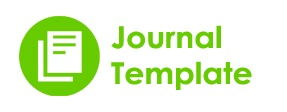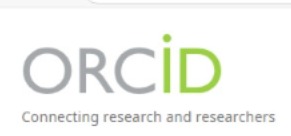Kepemimpinan Digital Menghadapi Persaingan Global Di Perguruan Tinggi
DOI:
https://doi.org/10.63889/pedagogy.v16i1.151Abstract
A leader is a person in a group who has a combination of personality and leadership skills that make others want to follow his direction. There are 5 leadership styles according to the leadership grid, namely the middle style, mid, relaxed and work. In the era of fast-paced scientific and technological progress and the digital era, today's leaders must also be able to compete in creating digitally literate leadership. By transforming employees digitally and digital tools (tools) become one of the effective strategies to stay quality and superior. In reality, there is still educational leadership in universities that have not implemented digital leadership as a form of transformation from faster technological developments. Facts show that not a few universities are climbing and then collapse instantly. Conversely, not a few universities continue tomaintain an increasing trend of performance. This phenomenon is closely related to the influence of globalization. Transformative leaders are able to see challenges into opportunities so that technological advances can be opportunities in implementing digital leadership. There are seven characteristics of digital leadership: responsibility, results, information distribution, purpose and judgment, error and conflict, change, and innovation. Therefore, facing global competition, there are several challenges that are faced in carrying out educational leadership, namely mastery of digital technology, creating new innovations, improving HR qualifications, certification programs, increasing competencies and career development. Keywords: Digital Leadership; Global Competition, Higher EducationReferences
Adrianto, Sopan. 2019. Leader Must Be Innovative. Jakarta: Elex Media Komputindo. Kartajaya, Hermawan. 2019. 18 Kunci Utama Penggerak Bisnis, Jakarta: Gramedia. Kartono, Kartini. 2008. Pemimpin dan Kepemimpinan. Depok: Raja Grafindo Persada. Kriyantono, Rachmat. 2010. Riset Komunikasi. Jakarta: Kencana.
Ahmadi. 2021 Tantangan Kepemimpinan Pendidikan Di Era Revolusi Industri 4.0, Jurnal Al-Hikmah Vol 3, No 2. 234-236
Boesenberg, Christina, (2019). 7 Characteristics of Leadership 4.0 – What successful leaders do differently, Global Leadership Consultants,
Oxford Leadership.
Florian Tagscherer, dkk, Leadership for successful digitalization: A literature review on companies' internal and external aspects of digitalization, Journal ELSEVIER, 2023. 2
Hikmat. 2009. Manajemen Pendidikan. Pustaka Setia: Bandung.
J. Jameson, dkk, A systematic review and framework for digital leadership research maturity in higher education, Journal ELSEVIER, 2022. 2-3
Maxwell, C. John, edisi Indonesia 2016. The 3600 Leader: Mengembangkan Pengaruh Anda dari Posisi Mana pun dalam Organisasi, terj. Lia Charlie (Jakarta: BIP Press).
Prasongko, Angga. 2019. The Role Of The Agile Leadership Model As A
Competitive Advantage For The Future Leader In The Era Of
Globalization And Industrial Revolution 4.0. Jurnal Pertahanan Vol. 5
No. 3.
Sonedi, 2018. Strategi Pengembangan Manajemen Perguruan Tinggi Swasta. Anterior Jurnal, 17 Issue 2. 69-78
Susanto, AB. 2019. Strategic Leadership. Jakarta: Gramedia
Tilaar. H.A.R. 2002. Perubahan Sosial dan Pendidikan: Pengantar Pedagogik Transformatif Untuk Indonesia. Jakarta: PT. Grasindo.
Wayong Moh. 2017. Menuju Era Globalisasi Pendidikan: Tantangan dan Harapan bagi Perguruan Tinggi di Tanah Air, Jurnal Inspiratif Pendidikan. VI: 2..299-237
Wulandari, F., dkk. (2019). Kepemimpinan Kepala Sekolah di Era Revolusi Industri 4.0 dalam Meningkatkan Akreditasi Sekolah. Prosiding Seminar Nasional Pendidikan Program Pascasarjana Universitas PGRI Palembang, 308–312. Retrieved from from Jurnal Ilmiah.https://jurnal.univpgripalembang.ac.id/index.php/Prosidingpps/article/download/2539/236






